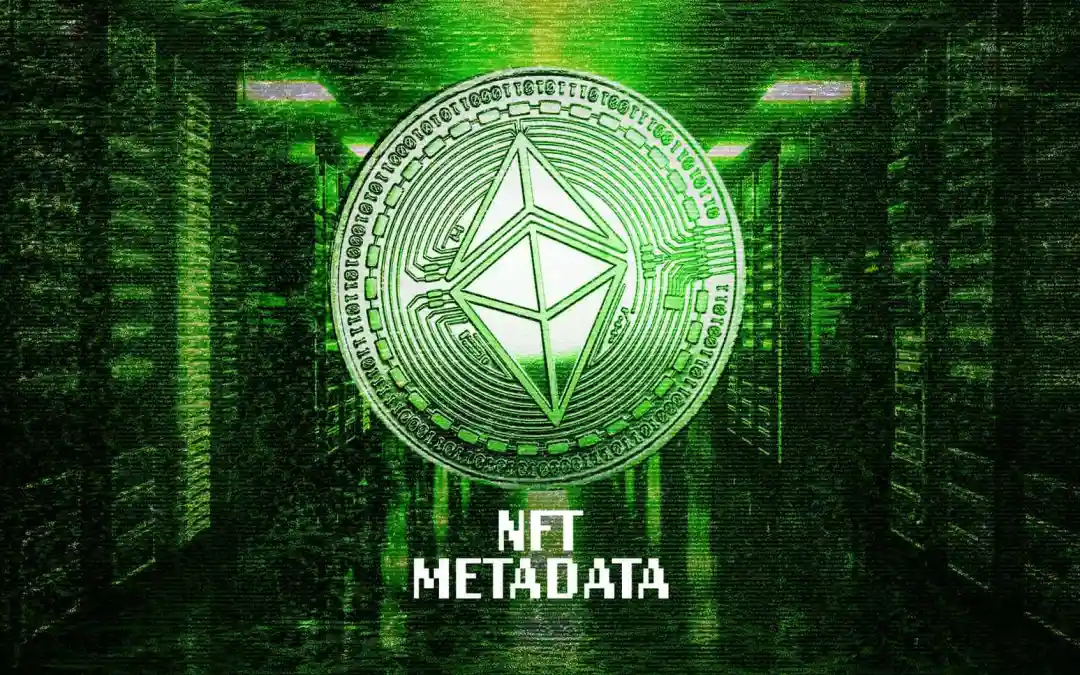Data that identifies other data is known as metadata. An NFT’s metadata can include information on its name, description, total supply, and other important characteristics.
NFT metadata also includes a reference to the identifiable digital asset, such as a picture, video, or audio file.
Since it is impractical to host a visual or audio asset directly on the blockchain, NFTs depend on metadata.
When attempting to conduct a transaction with an asset directly, the NFT metadata is used in the blockchain to offer additional information or data about the asset.
The metadata and the NFT are typically separate entities. Instead, the digital item in your NFT has a link that directs users to the metadata, which is stored somewhere online.
Hosting platforms don’t last forever, therefore if your NFT is hosted on a normal website, the site’s closure for whatever reason could cause you to lose it and all the worth it represents.
If the link to your NFT is lost, you won’t exactly lose the NFT itself, but you will lose all the data that gives it its particular appearance, sound, and description. This is a big worry because some of these cost several million dollars in some circumstances.
You could likely save the specifics of the digital item over an ordinary internet connection on a cloud drive that anyone can access from anywhere.
The answer is a little different on the decentralized web and requires a special file system that is always accessible.
In essence, the tokens are a peer-to-peer transferable virtual representation of worth. Without the intrusion of banks, governments, and other third parties who normally control and manage fiat currency, this worth is dispersed and securely held through a network.
The NFT metadata sends crucial data from Ethereum, including the smart contract’s code and event data (Ethereum-based subchain).
When clients wish to monitor the condition of the asset or even transfer them to other accounts, the NFT metadata can provide the information. If necessary, it can link the Ethereum network to a centralized blockchain infrastructure.
Both NFT metadata and blockchain technology must be decentralized, thus a consensus method that can maintain the security of both systems is required.
NFT Metadata has several potential applications. For instance, it might be used to store additional information about a token, potentially including a receipt or serial number that facilitates transactions, or it can offer extra details about the asset itself, such as the price, picture, or current location.
There are other use cases as well, like storing state data outside the blockchain, which might be advantageous on computers with constrained storage or bandwidth.
In this setup, metadata data is transmitted to centralized servers and is later accessible on the blockchain through a secure connection when needed.
The owner of the data can authorize a piece of information before it is entered into a blockchain for storage.
The owner of the data must provide permission for others to see their files, whether it is stored on a server or in a centralized database; they do this using their private keys.
Users who are subject to limitations or controls can directly store metadata on a blockchain, different from public blockchains.
Don’t miss important articles during the week. Subscribe to blockbuild weekly digest for updates.
Technologies are taking the world! Our team does all the best for you to know the latest news, the hottest offers, and authoritative reviews.
We’re social. Connect with us:
Get the latest creative news from FooBar about art, design and business.
Type above and press Enter to search. Press Esc to cancel.
Be the first to know the latest updates


